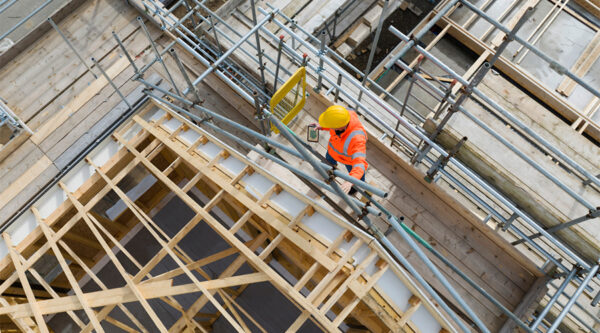

An Employee Ownership Trust (EOT) is a legal structure that allows a company to be owned, indirectly, by its employees.
Instead of selling shares to an outside buyer, the existing owners sell a controlling stake, at least 51%, into a trust that holds the shares on behalf of all employees collectively.
Employees don’t have to buy shares themselves, the trust acts as a single shareholder. The company then uses future profits (or vendor finance) to pay the selling owners over time. UK tax law encourages this model. Owners who sell to a qualifying EOT can pay 0% capital gains tax, and employees can receive annual tax-free bonuses of up to £3,600.
In practice, an EOT allows a business to transition to employee ownership without the complexity of hundreds of individual shareholdings. It’s designed to preserve stability, protect company culture, and give employees a stake in the business’s success.
Why EOTs fit the construction industry
Many construction firms are family-owned or led by founders approaching retirement. These companies often have deep relationships with clients, subcontractors and communities built up over decades. Selling to a large competitor or private equity buyer risks disrupting that culture and damaging goodwill. An EOT provides an alternative, a way to hand over control while keeping the company’s identity, ethos and leadership intact.
The sector is also struggling with a chronic skills shortage. Recruiting and retaining experienced project managers, surveyors, site supervisors and skilled tradespeople is increasingly difficult. By moving to employee ownership, firms can show staff they have a real stake in the company’s future. That can boost morale, improve retention and make the business more attractive to new recruits. Some contractors even report that being employee-owned helps them win work because clients view them as more stable and more likely to retain key people.
Construction is notoriously cash-sensitive. Margins are tight, projects are often fixed price, and costs for labour and materials fluctuate. Because an EOT can use deferred payments to the selling shareholders, the transition can be funded gradually from future profits rather than relying on an outside buyer or heavy external debt. This flexibility is appealing for owners who want a controlled exit without destabilising the business.
And the tax incentives are hard to ignore. Full capital gains tax relief for selling shareholders, plus income-tax-free bonuses for employees, makes the model financially attractive for both sides compared to a traditional sale.
Why are more construction companies using EOTs?
Several forces are now pushing more construction firms towards EOTs. Awareness has grown rapidly as specialist advisers promote the model and as successful case studies appear at industry events. Owners see peers in scaffolding, engineering, design-build and other subsectors making the transition and are reassured that it works.
The external sale market is also more challenging. Valuations are unpredictable, buyers are selective, and deals can be drawn-out. For owners who want to step back but still care about the business’s legacy, an EOT offers a phased exit without the disruption of a third-party takeover.
Government support has remained stable since EOTs were introduced in 2014. Aside from some tightening of governance rules, the core tax benefits have survived multiple budgets. That stability allows owners to plan with more confidence.
And finally, competition for talent is intense. Offering employees a real stake in the company’s success can differentiate a contractor from its rivals, both in hiring and retention. In a market where skilled workers can pick and choose employers, that matters.
Things to watch
An EOT isn’t a magic bullet. Construction firms must have consistent profitability to fund the buy-out, and the sector’s volatile cash flows can put pressure on the repayment plan. Governance and communication are also crucial. Employees need to understand how the trust works and feel genuinely engaged, not just told they are owners in name only. External finance may still be needed in some cases, and lenders are still getting comfortable with EOT structures.
The bottom line
For construction companies, EOTs are proving to be more than a niche alternative. They provide a way to secure succession, preserve culture, and reward staff, all while benefiting from favourable tax treatment. With construction now the fastest-growing sector for employee ownership and a growing body of success stories, EOTs are increasingly being viewed not just as an option but as a strategic tool for long-term sustainability.










